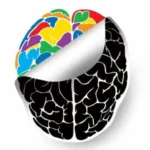The experiences we gain throughout our lives shape the way we relate to ourselves and others.
We could say that the past conditions the future, and that we will only be able to aspire to new horizons when we decide to retrace part of the path we have traveled.
Schema-focused therapy , about which this article will focus, is sensitive to such reality and proposes an integrative method to approach it. Knowing it is enriching, as it provides an interesting perspective on the how and why of human suffering.
Schema-focused therapy
Schema-focused therapy constitutes the effort to coherently integrate a broad group of therapeutic strategies aimed at the treatment of those suffering from a personality disorder. It was formulated by Jeffrey Young , and combines both cognitive and behavioral, experiential, psychodynamic and constructivist models; providing each of them with a specific purpose in the context of a theoretical framework that emphasizes the evolutionary dawn of the individual: his childhood.
It conceives the existence of patterns of behavior and emotion that have their roots in the first years of life, and that condition the way we act and think. In this sense, he is sensitive to the greatest difficulties that the therapist may encounter when he treats a person with this type of problem; specifically the difficulty in accessing what is unfolding inside, the impediments to isolating an interpersonal conflict from other daily frictions, the motivational deficit and the disdainful or non-cooperative attitude.
It is for this reason that above all, it prioritizes a solid rapport, which allows the confrontation of the patients’ narrative (underlining its contradictions) through sessions with a substantial emotional charge and that deal with what was experienced throughout childhood or its impact today. Generally this therapy extends for longer periods of time than usual; and requires a non-directive attitude that promotes the assessment and discovery of what is happening, happened or could happen in the person’s life.
Below we will delve into all the fundamental concepts that are typical of this interesting form of treatment.
Basic concepts
There are two basic concepts for schema-focused therapy. It is key to know what exactly a “scheme” is for the author of the proposal, and also to understand what people do in order to maintain or transcend them. Specifically, he coined them as “early dysfunctional schemas” and this section will be built on them.
1. Early dysfunctional scheme
Early dysfunctional schemas are the axis around which the entire intervention revolves, and the raw material with which we work during the sessions. These are stable “themes” that develop throughout our lives, which are very often perceived as if they were true “a priori” (resistant to all the logical arsenal that tries to refute them) and which also they perpetuate themselves through the habits that guide everyday life
It can be seen that such themes have the capacity to condition the emotional life of those who hold them, exerting a harmful effect on their ability to adapt to day-to-day life. The thoughts and actions that are associated with such difficulties are precipitated in the setting of disparate social situations, and represent the space in which temperament (biological predisposition) and environment come together.
Early dysfunctional schemas are the result of unmet needs in childhood, associated with a constellation of varied issues : secure attachment (connection with bonding figures), autonomy (development of initiative to explore the environment without overwhelming fear emerging), expressive freedom (ability to manifest individuality and will), symbolic play (establishment of positive ties with the group of peers) and self-control (inhibition of impulses). Above all, the origin of such deficiencies would be detected in the family, although not only in it.
The author identified eighteen schemes of this nature. The frustration of needs, abuse and identification with parental patterns (vicarious learning) would be at its basis. We go on to detail them.
1.1. Abandonment and instability
Feeling that you cannot count on anyone’s help, because at the time of greatest vulnerability (childhood) there was no possibility of accessing a figure capable of providing it. As a result, the environment is perceived as unpredictable and one lives cradled in constant lack of protection and uncertainty In these cases, intense fear of abandonment, real or imagined, may arise.
1.2. Mistrust and abuse
Insecure attachment patterns, especially disorganized attachment, would make up the habit of being suspicious of the intentions of others regarding what one wants from oneself. This scheme implies a tendency towards both approximation and distancing , and it would be common in those who may have suffered situations of abuse by their loved ones. In any case, trust would imply a feeling of deep nakedness and vulnerability.
1.3. emotional loss
Inner belief that not even the most basic of needs can be satisfied, such that survival would require an attitude oriented solely toward the self, to the detriment of the active search for support and understanding. It translates into a tendency toward isolation and disinterest in social relationships. Self-sufficiency can lead to loneliness
1.4. Imperfection and shame
This scheme describes an iron feeling of incompleteness, coming from the constant invalidation of one’s own will and identity As a result, a tacit sense of shame and inadequacy would flourish, which would prevent the balanced development of intra- and interpersonal relationships. In any case, one lives in the constant concealment of a facet of one’s own identity that is considered totally inadmissible in one’s own eyes.
1.5. Social isolation and alienation
Deliberate decision to maintain a position of isolation from others , on which a solitary existence is built and which is based on the fear of rejection. This scheme is also associated with alienation, that is, ignorance about everything that defines us as unique human beings and the acceptance of otherness as synonymous with property.
1.6. Dependency and incompetence
Feeling of zero self-efficacy, which is expressed as ineptitude or inability to lead an autonomous life. According to this scheme, an anxious search for the opinion of others would be articulated, as a guide in making decisions on matters considered personally relevant. The fear of being free is common in these cases
1.7. Susceptibility to damage or disease
Apprehensive expectation that one is vulnerable to the appearance of unforeseeable setbacks that may affect one’s own health or that of significant others. In general, it involves the feeling of serious imminent danger, for which the person believes they lack effective coping resources. It is because of that one lives by directing attention towards everything that could represent potential harm with permanent insecurity.
1.8. Immature self or complication
Establishment of social relationships in which one’s own identity is sacrificed excessively , which is not perceived as a guarantor of individuality and only acquires its meaning when contemplated from the prism of other people’s views. It is a kind of lack of definition of the self, which is experienced as undifferentiated and formless.
1.9. Failure
Belief that the mistakes and errors of the past will be inexorably repeated throughout life , without there being possible atonement for guilt or the possibility of redemption. Everything that had been done incorrectly would be reproduced again, so only the ominous memory of what had already been experienced would serve as a guide for what is about to happen. Jealousy, for example, is associated with this scheme.
1.10. Law and grandeur
This scheme would imply an inflammation of the image one has of the self, which would occupy the top of the hierarchy relative to relevance or value Thus, an attitude of tyranny would develop in interpersonal relationships and the prioritization of one’s own needs over those of others.
1.11. Insufficient self-control
Difficulty controlling impulse according to what is adaptive or appropriate in each situation of interaction. Sometimes it would also be expressed in the difficulty in adjusting behavior to the system of rights and duties that protects the people with whom one lives (incurring illegalities or antisocial acts).
1.12. Subjugation
Abandonment of the will as a result of the expectation that others will wield hostile or violent attitudes toward one, folding to stay in the background for fear that the expression of individuality will degenerate into a conflict situation. It would be common in people subjected to excessively authoritarian or punitive upbringings.
1.13. Self-sacrifice
Emphasis on satisfying the needs of others to the detriment of one’s own, so that Situations of deprivation are maintained at many levels as a result of hierarchizing relationships ignoring any perspective of balance or reciprocity. Over time it can translate into an inner feeling of emptiness.
1.14. Approval Seeking
Restricted search for the acquiescence and approval of others , so time is invested in exploring the expectations of the groups with which one interacts to define from them what the behavior to be carried out in the everyday scenario will be. In the process, the ability to decide autonomously and independently is diluted.
1.15. Pessimism
Construction of gloomy expectations about the future of events, in such a way that the worst possible scenario is restrictively foreseen as long as there is a minimum degree of uncertainty Pessimism can be experienced as a feeling of constant risk over which there is no control, giving rise to a tendency to worry and hopelessness.
1.16. emotional inhibition
Excessive containment of emotional life, which is why the aim is to sustain a perennial fiction about who we really are, in order to avoid criticism or feeling shame. Such a pattern complicates the creation of relationships with which to obtain quality emotional support which would reduce the risk of problems in the psychological sphere.
1.17. Hypercritical
Belief that one must conform to self-imposed standards , often extremely rigid. Any deviation from these, which are usually expressed in lapidary terms such as “shoulds”, would imply the appearance of self-punitive thoughts and behaviors or extreme cruelty towards oneself.
1.18. Sentence
Conviction that there are a series of immutable laws whose compliance is mandatory and must be enforced Anyone who decided not to take them should be subject to severe punishments.
2. Outline operations
From this model, it is assumed that the patient lives with one or more of these schemes, and that he will carry out a series of behaviors and thoughts aimed at perpetuating or curing them. The objective of treatment is none other than to mobilize resources to adopt the second of these strategies, offering a varied selection of procedures that we will delve into later.
The perpetuation of the schemes would be carried out through four specific mechanisms namely: cognitive distortions (interpretation of reality that does not at all adjust to objective parameters or facilitate adaptation to the environment), life patterns (unconscious choice of decisions that maintain the situation or do not facilitate options for change), avoidance (flight or escape from life experiences that harbor an opportunity for authentic transformation) and overcompensation (imposition of very rigid patterns of thought and action aimed at artificially showing the opposite of what is known to be a lack).
Healing, for its part, describes a process aimed at questioning and debating schemas , to free oneself from its influence and to transcend its effects. It means living an authentic life, without the mediation of the harmful results that these have for oneself or for others. It is the objective of therapy, and to do so, potentially beneficial memories, behaviors, emotions and sensations must be promoted; task for which this author selects an eclectic set of strategies from almost all currents of Psychology. We delve into this point below.
therapeutic process
There are three phases that can be distinguished in schema-focused therapy. All of them have their own purpose, as well as techniques to resort to.
1. Evaluation and education
The first stage is aimed at stimulating the quality of the therapeutic relationship and investigating past experiences, in order to extract the schemes that emerge from the subject’s experiences and know the way in which they have compromised their life until now.
It involves a review of one’s own history, but also reading materials and completing questionnaires with which to explore the variables of interest (attachment style or emotional regulation, to name a few examples). It is at this point where the objectives of the program are set and the tools to be used are chosen.
2. Change phase
In the change phase, therapeutic procedures begin to be applied , displaying good theoretical coherence and creativity. The administration format is individual, but sessions can be scheduled with the family if circumstances indicate it. Below we will describe what are the techniques commonly used in schema-focused therapy.
2.1. Cognitive techniques
The objective of the cognitive techniques used in schema-focused therapy is none other than to review the evidence for and against that the person has to maintain or discard a certain belief (that adheres to one of the schemas on which was elaborated upon previously).
The therapist makes use of collaborative empiricism and also guided discovery (open questions that are not intended to persuade, but rather to contrast the patient’s hypotheses) and strategies such as arguments/counterarguments or the use of cards with the rational ideas that have been derived from the debate process (which the patient carries with him to read when he wants to). want).
2.2. Experiential techniques
Experiential strategies seek to deal with the scheme from an emotional and existential prism. To do this, they use a series of techniques, such as imagination (evoking past experiences through the guidance of the therapist), role-playing (patient and clinician play significant roles in the life of the first one) or the empty chair.
For the latter, two unoccupied seats are located, one in front of the other The patient must sit alternately in both, playing a different role on each occasion (his father in one of these spaces and himself in the other, for example) and reproducing a conversation.
23. Behavioral techniques
Behavioral techniques have the purpose of identifying situations in which the subject may behave in a way that is harmful to himself or other people, weighing what changes should be made regarding the behavior and/or the environment. Also They seek to strengthen concrete coping strategies to solve the problems that plague them thereby increasing their sense of self-efficacy.
3. Termination
The duration of the program is variable, although it frequently lasts longer than other similar proposals. The detection and modification of all maladaptive schemas and behaviors is pursued, considering that therapeutic success is achieved when one can live a life with greater emotional autonomy. Often Completion of the process involves scheduling a series of follow-up sessions with which the maintenance of improvements is assessed.









